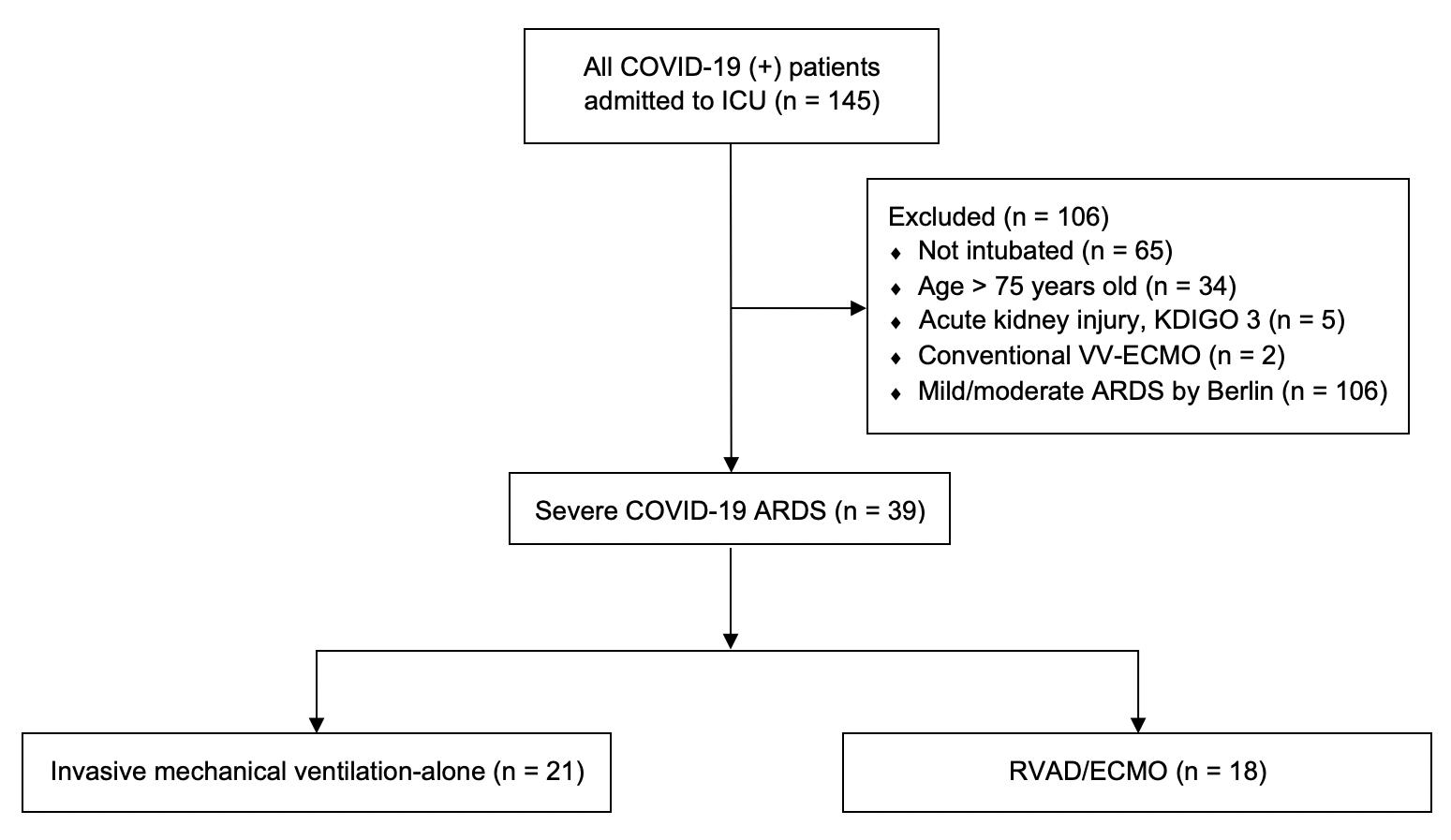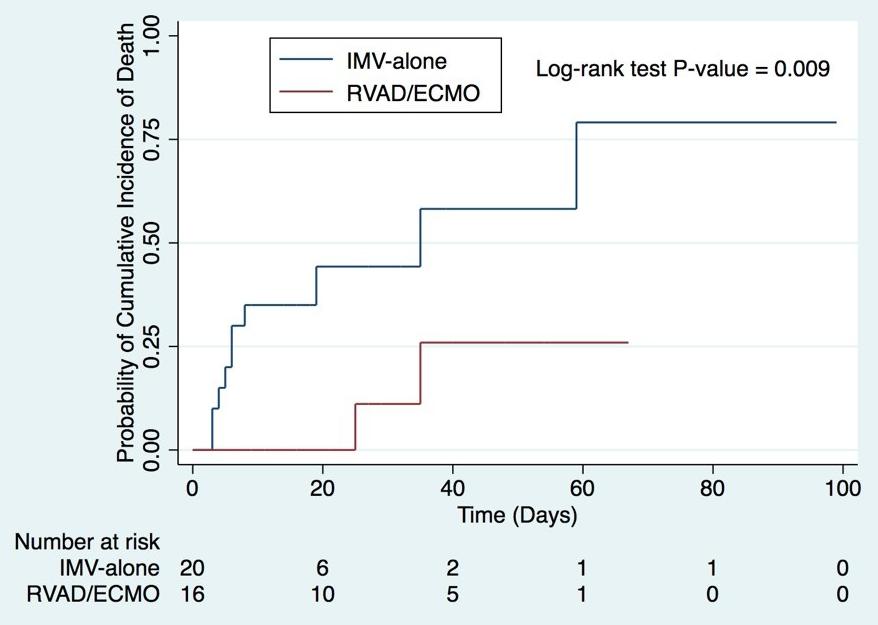
5 minute read
Right Ventricular Assist Device and Extracorporeal Membrane Oxygenation for the Treatment of Severe COVID-19 Acute Respiratory Distress Syndrome
Nathan J. Smith, MD
General Surgery Research Resident
Michael T. Cain, MD
Cardiothoracic Fellow, University of Colorado at Denver, MCW General Surgery Resident Alum ‘20
Lucian A. Durham, III, MD, PhD
Associate Professor, Division of Cardiothoracic Surgery
David L. Joyce, MD, MBA
Associate Professor, Division of Cardiothoracic Surgery
“Necessity is the mother of invention” as the old saying goes. The current SARS-CoV-2 pandemic (i.e., COVID-19) has strained our public health system and pressed the medical community to adapt quickly in light of limited knowledge and experience. As we learn more about this disease, its unique pathophysiology and clinical manifestations have challenged clinicians to develop new treatment strategies at a feverish pace, and to look beyond conventional treatment pathways. Among hospitalized patients who develop COVID-19 pneumonia, acute respiratory distress syndrome (ARDS) occurs in approximately 31-67% with a mortality rate as high as 52%.1-3 ARDS is not a new phenomenon, and although clinicians have recognized and treated ARDS long before COVID-19, the high incidence among COVID-19 patients has placed a heavy strain on our intensive care units and consumed resources. Effective treatments such as lung protective ventilation and prone positioning have found their place in the COVID-19 pandemic and are still mainstays of treatment, however there are those who fail these conventional forms of support and require advanced therapies. These patients are candidates for veno-venous extracorporeal membrane oxygenation (VV-ECMO).4 5
VV-ECMO is a form of advanced oxygenation support where blood is removed from the patient using a centripetal pump and passed through a specialized membrane lung that allows for both oxygenation and gas exchange, supplementing, and in some instances replacing, the role of the lungs in those with recalcitrant respiratory failure. Experience in other viral respiratory illnesses has leant evidence to the benefit of VV-ECMO in such situations, but early experience with COVID-19 has been less promising.6 7 What makes COVID-19 so unique compared to other coronavirus illnesses is the multi-organ system involvement, including both cardiac and pulmonary vascular dysfunction. As a result, conventional VV-ECMO may be ineffective due to unsupported cardiac dysfunction in the setting of severe respiratory failure.8-11 This knowledge has forced physicians to rethink the approach to VV-ECMO in patients with severe COVID-19 ARDS.
Innovations in VV-ECMO cannula design have provided a unique solution to the treatment of combine cardiopulmonary failure. Use of these advanced devices has become a mainstay of ECMO care here at the Medical College of Wisconsin. The TandemLife Protek Duo™ cannula (LivaNova, London, UK) is a dual-lumen percutaneous right ventricular assist device Figure 1. TandemLife Protek (RVAD) approved for the treatment of acute right Duo™ percutaneous right ventricular assist device (LivaNova, London, UK) ventricular failure (Figure 1). The cannula is inserted via the right internal jugular vein and advanced into the main pulmonary artery under fluoroscopic and echocardiographic guidance. When connected to an ECMO circuit and oxygenator, deoxygenated blood is removed at the right atrium, oxygenated, and returned to the patient in the main pulmonary artery. In this fashion, the cannula supports the function of the right ventricular by bypassing and unloading the right heart while also assuming the oxygenation role of the lung. This combines the mechanical support function of an RVAD with the gas exchange function of conventional VV-ECMO, providing a combined RVAD/ECMO system. We have previously reported our experience with RVAD/ECMO with favorable results.12
Based on the knowledge of the combined cardiopulmonary pathophysiology at play in COVID-19 pneumonia, RVAD/ECMO has quickly become the mainstay of mechanical circulatory support for COVID-19 at our institution. Led by Dr. Lucian A. Durham, III, MD, PhD, director of ECMO and mechanical circulatory support at the Medical College of Wisconsin, our early experience in this pandemic with RVAD/ECMO for the treatment of severe COV-

Oxygenation for the Treatment of Severe COVID-19 Acute Respiratory Distress Syndrome: Evolving Care in a Pandemic

Figure 2. Initial COVID-19 experience cohort
Figure 3. Kaplan-Meier mortality for RVAD/ECMO and IMValone patients.
ID-19 ARDS has been remarkably favorable. Through close collaboration with the Division of Critical Care Medicine at the Medical College of Wisconsin, as well as established partnerships with referring institutions throughout Wisconsin, early RVAD/ECMO support in select patients has resulted in significantly lower mortality when compared to similar patients who were treated with conventional mechanical ventilation alone. From March 1 to July 6, 2020, 145 patients were admitted to the intensive care unit at Froedtert Memorial Lutheran Hospital for COVID-19 pneumonia (Figure 2). Patients were not considered ECMO candidates if they were older than 70, not intubated, or had concomitant renal failure. In total, 39 patients met criteria for severe COVID-19 ARDS, of which 18 patients received RVAD/ECMO. The remaining 21 patients received invasive mechanical ventilation (IMV) alone. When comparing these two groups, RVAD/ECMO patients demonstrated a 11.1% mortality versus 52.4% in those treated with IMV-alone (p=0.008). Thirty-day mortality was also significantly lower for RVAD/ECMO patients (5.6%) versus those treated with IMV alone (42.9%, p=0.011). Length of stay, duration of mechanical ventilation, and the incidence of tracheostomy were similar between the two groups. No patients treated with RVAD/ECMO experienced acute kidney injury after cannulation, compared to 71.4% of mechanical ventilation patients (p<0.001). The average duration of RVAD/ECMO support was 13 days (95% CI 7.5-22 days) with 84.6% of patients surviving to device removal. Kaplan-Meier adjusted mortality was significantly lower for RVAD/ECMO patients (p=0.009) (Figure 3). The most common complication in RVAD/ECMO patients was bleeding. These early results have been echoed by other institutions thus providing support to the novel utility of combined right ventricular support and ECMO in the treatment of severe COVID-19 ARDS.13
Since the beginning of this pandemic, our experience with ECMO for COVID-19 has expanded to include 40 patients. We have learned a tremendous amount about the role of ECMO in COVID-19 and the ideal patients who might benefit from such an aggressive intervention. With the number of reported cases rising in the United States, the strain being felt by our healthcare system is certainly being felt in the field of ECMO, and we are being forced to carefully select which patients offered RVAD/ECMO support. It is fast becoming clear that early referral through close internal and extra-institutional partnerships, early identification of progressive ARDS, and ECMO consideration prior to the onset of multisystem organ failure are critical in achieving optimal outcomes and saving these sick patients. The end of this pandemic is far from near, but one thing is certain; by the end, ECMO care will never be the same and we will have learned much to improve care for the next one. Necessity is, indeed, the mother of invention and, in this case, innovation.
FOR ADDITIONAL INFORMATION on this topic, visit mcw.edu/surgery or contact Dr. Lucian Durham at ldurham@mcw.edu.



